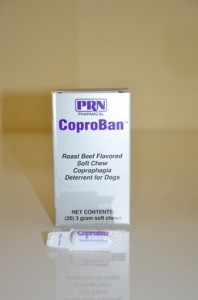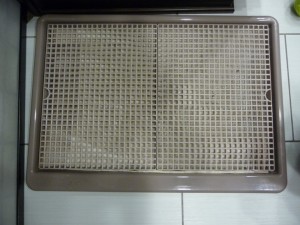 Our vet recommended Coproban for Aramis as he used to eat his own poop and my other peke’s too. It works great at home. However he used to eat other dogs’ poop while I was walking him outside. My attention is 100% on him, as I always bring treats as a reward his attention is always on me. I give tiny pieces of treat to keep him focus; I give big one when he does his business.
Our vet recommended Coproban for Aramis as he used to eat his own poop and my other peke’s too. It works great at home. However he used to eat other dogs’ poop while I was walking him outside. My attention is 100% on him, as I always bring treats as a reward his attention is always on me. I give tiny pieces of treat to keep him focus; I give big one when he does his business.
CoproBan – 20 count $10.99
Category Archives: Training
Coprophagia / eating feces
UgoDog Indoor Dog Potty

We bought this UgoDog Indoor Dog Potty because every time he pees or poops his paws are soaked and dirty. It is plastic based and it measures 19.1″x 26.4″x0.98″ (48.5cm x 64cm x 2.5 cm). You just add a pee pad or a newspaper (cost you much less) under the rack and it is ready to be used. It was expensive for a plastic product ($49.95), and sometimes he still have some pee on his paws or squash his poop; which makes it difficult to clean as the rack squares are very small. He tends to do his business always on the same spot, and after couple days it smells pee, so I usually change the pee pad every couple of days and clean the UgoDog with a disinfecting product.
How to Train a Pekingese
Training is not an easy task with the Pekingese. They are stubborn and willful and do not do well adhering to authority. Basic obedience should be taught at an early age. Puppy classes are highly recommended for this breed. They respond much better to praise than they do to being bossed. This breed is not a breed that will do well in agility. They are strictly a conformation breed. Softly strolling around a ring is a much better way for them to display their royal self’s. Jumping through hoops or running relays, is far beneath their dignity. They prefer to be spectators rather than participants of such physical activity. Housebreaking must be consistent with this breed. They are stubborn and must be kept to the task at hand. Crate training is the preferred method. If you choose not to use the crate training method, then puppy pads and a training aid should be started at an early age. Consistency and praise are the best method of training the Pekingese. They respond well to a soothing voice and calm demeanor. Harsh methods will not work with this breed.